Sprinkler irrigation systems play a crucial role in the efficient delivery of water to agricultural and forestry landscapes. These systems utilize overhead sprinklers to distribute water evenly across fields or forests, ensuring proper hydration for crops and trees. For instance, imagine a hypothetical scenario where a farmer is struggling to cultivate his drought-prone land. By implementing an efficient sprinkler irrigation system, he can optimize water usage and minimize wastage, leading to improved crop yields.
The use of sprinkler irrigation technology has gained popularity due to its numerous advantages over other methods of watering such as flood or furrow irrigation. This method allows for precise control of water distribution, enabling farmers and foresters to deliver the right amount of moisture directly to plants’ root zones. Additionally, by eliminating runoff and minimizing evaporation losses, these systems contribute significantly towards conserving precious water resources. Consequently, they not only enhance productivity but also promote sustainable practices in agriculture and forestry industries.
In this article, we will delve into the various components that make up an efficient sprinkler irrigation system and explore their functions in detail. We will discuss different types of sprinklers available on the market today along with their specific application areas. Furthermore, we will examine how technological advancements have revolutionized these systems by incorporating automation features that allow for remote monitoring and control.
One of the key components of a sprinkler irrigation system is the water source, which can be a well, pond, or reservoir. This water source is connected to a pump that provides the necessary pressure to distribute water through the system. The pump plays a crucial role in maintaining consistent flow rates and ensuring adequate coverage across the field or forest.
The main distribution pipeline carries water from the pump to individual sprinklers. This pipeline is typically made of durable materials such as PVC or polyethylene to withstand varying weather conditions and resist corrosion. It is important for the pipeline to be properly sized and designed to minimize pressure losses along its length.
At each sprinkler location, there are risers that connect the main distribution pipeline to the sprinkler heads. Risers can be made of metal or plastic and come in different lengths depending on the desired height of spray pattern. They provide vertical support and stability to ensure proper functioning of the sprinklers.
Sprinkler heads are responsible for dispersing water over a designated area. There are various types of sprinkler heads available, including impact sprinklers, rotary sprinklers, and micro-sprinklers. Impact sprinklers are commonly used in large agricultural fields due to their long throw distance and high flow rates. Rotary sprinklers are ideal for smaller areas as they provide even coverage with adjustable patterns. Micro-sprinklers are often used in orchards or vineyards where precise application is required.
In recent years, technological advancements have led to the development of automated systems for controlling and monitoring sprinkler irrigation systems. These systems can be programmed to operate at specific times based on plant needs, weather conditions, and soil moisture levels. Remote sensing devices such as soil moisture sensors can provide real-time data on soil moisture content, allowing farmers to make informed decisions regarding irrigation scheduling.
Overall, an efficient sprinkler irrigation system consists of several components working together seamlessly to deliver water precisely and effectively. By utilizing these systems, farmers and foresters can optimize water usage, improve crop yields, and promote sustainable practices in agriculture and forestry industries.
Advantages of Sprinkler Irrigation
Sprinkler irrigation systems offer numerous advantages that make them a popular choice in agriculture and forestry. One such advantage is the ability to provide water directly to plant roots, ensuring efficient water usage. For instance, imagine a farm where sprinklers are used to irrigate crops during periods of drought. By precisely targeting the root zone, these systems minimize water wastage by reducing evaporation and runoff.
In addition to promoting water efficiency, sprinkler irrigation offers convenience and flexibility for farmers and foresters. With easily adjustable spray patterns and customizable settings, these systems can be tailored to suit different crop types or forest areas. This adaptability allows for effective watering across varying terrains or landscapes with minimal effort from the user.
- Increased crop yield: By providing consistent moisture levels, sprinklers ensure optimal growing conditions, resulting in higher yields.
- Reduced labor requirements: Automated control mechanisms streamline the irrigation process, minimizing manual labor needs on farms or in forests.
- Protection against frost damage: In cooler climates, sprinklers can help prevent freezing temperatures from harming plants through controlled application of water.
- Versatility for various soil types: Sprinkler systems work well in sandy soils as they distribute water evenly without causing erosion.
Furthermore, another significant advantage of using sprinkler irrigation systems lies in their potential cost-effectiveness over time. While initial installation costs may vary depending on factors like system complexity and size, the long-term savings achieved through reduced labor expenses and optimized water usage often outweigh this investment.
Transitioning smoothly into the subsequent section about “Types of Sprinkler Systems,” it is important to note that there are various options available when it comes to choosing an appropriate sprinkler system for specific agricultural or forestry applications. By understanding the characteristics and features offered by different types of sprinklers, users can select a system that best suits their needs while maximizing efficiency and productivity.
Types of Sprinkler Systems
Sprinkler irrigation offers numerous advantages over other irrigation methods, making it a popular choice in both agriculture and forestry. One notable advantage is its ability to provide uniform water distribution across the field or forest area. This ensures that each plant receives an adequate amount of water, leading to improved growth and productivity.
For instance, imagine a farmer who wants to irrigate their crop field using sprinklers. By installing a well-designed sprinkler system, they can achieve uniform water application throughout the entire field. This enables them to avoid under-irrigation or over-irrigation in specific areas, ensuring optimal moisture levels for all crops.
In addition to uniformity, there are several other benefits associated with sprinkler irrigation:
- Water efficiency: Sprinkler systems minimize water loss due to evaporation by delivering water directly to the root zone of plants.
- Time-saving: Compared to manual watering methods, such as flood irrigation, sprinklers save time by automating the process.
- Flexibility: Sprinklers allow farmers and foresters to easily adjust the frequency and duration of irrigation based on evolving weather conditions or plant requirements.
- Reduced soil erosion: Properly designed sprinkler systems prevent excessive runoff and soil erosion by evenly distributing water at controlled rates.
To better understand these advantages visually, consider the following table showcasing a comparison between different irrigation methods:
| Uniform Water Distribution | Water Efficiency | Time-saving | Soil Erosion Control | |
|---|---|---|---|---|
| Flood Irrigation | No | Low | Moderate | Poor |
| Drip Irrigation | Yes | High | High | Excellent |
| Sprinkler Irrigation | Yes | Moderate | High | Good |
As seen from this comparison, while drip irrigation excels in water efficiency and soil erosion control, sprinkler irrigation strikes a balance between uniformity of water distribution and time-saving benefits. This makes it an attractive option for agricultural and forestry applications.
Moving forward, the next section will delve into the different types of sprinkler systems available, exploring their unique characteristics and suitability for various contexts. Understanding these options is essential to make informed decisions when designing a sprinkler system that meets specific requirements.
Factors to Consider in Sprinkler System Design
In the previous section, we explored various types of sprinkler systems used in agriculture and forestry. Now, let us delve deeper into the factors that need to be considered when designing an efficient sprinkler system.
When designing a sprinkler system, it is essential to take into account several key factors. First and foremost, the topography of the land plays a crucial role in determining the type of system that will work best. For instance, on hilly terrain, a center pivot or lateral move system may not be suitable due to uneven distribution of water. In such cases, fixed spray heads or impact sprinklers would be more appropriate.
Secondly, soil type and texture must also be considered during design. Sandy soils tend to allow water to permeate quickly, requiring higher application rates and shorter irrigation cycles. On the other hand, clayey soils have lower infiltration rates and can lead to runoff if not managed properly. Therefore, choosing nozzles with adjustable flow rates allows for customization based on specific soil conditions.
Another factor to consider is crop type and spacing. Different crops require varying amounts of water at different stages of growth. By installing a zoned system with separate valves for each area or field within an agricultural operation, farmers can easily control the amount and timing of water applied based on crop needs.
Additionally, climate plays a significant role in deciding which sprinkler system will prove most effective. Areas with high wind speeds necessitate low-pressure systems or supplemental windbreaks to prevent overspray and ensure uniform coverage across fields.
To highlight how these factors interact harmoniously in an efficient sprinkler system design:
- The topography affects nozzle selection.
- Soil type determines application rates.
- Crop type influences zoning considerations.
- Climate dictates pressure requirements.
Table: Factors Influencing Sprinkler System Design
| Factor | Considerations |
|---|---|
| Topography | – Hilly terrain may require fixed spray heads or impact sprinklers. |
| Soil Type | – Sandy soils need higher application rates and shorter cycles. |
| – Clayey soils necessitate adjustable nozzles to avoid runoff. | |
| Crop Type | – Different crops have varying water requirements at each stage. |
| Climate | – High wind speeds demand low-pressure systems or windbreaks. |
In summary, designing an efficient sprinkler system involves considering factors such as topography, soil type, crop type, and climate. Each factor influences the choice of sprinkler system components and ensures optimal water distribution for agricultural and forestry applications.
Transitioning into the subsequent section on “Efficient Water Management in Sprinkler Irrigation,” it is essential to explore strategies that can be employed to maximize water usage while minimizing wastage in these systems.
Efficient Water Management in Sprinkler Irrigation
After discussing the various factors that are important to consider in sprinkler system design, it is crucial to address the aspect of efficient water management. By implementing effective strategies for water conservation and optimization, significant benefits can be achieved both in terms of cost savings and environmental sustainability.
To illustrate this point further, let us consider a hypothetical case study of a large-scale agricultural farm that implemented an efficient sprinkler irrigation system. Prior to installing the new system, excessive water usage was observed due to inefficient distribution methods. The farm experienced high water bills and inconsistent crop yields as a result. However, after adopting an optimized sprinkler system design, several positive outcomes were realized.
The following bullet points highlight key considerations for efficient water management in sprinkler irrigation:
- Proper selection of nozzle types: Different crops have varying watering requirements; therefore, selecting appropriate nozzles based on the specific needs of each crop plays a crucial role in minimizing wastage.
- Scheduling irrigation accurately: Implementing advanced technologies such as soil moisture sensors or weather-based controllers enables precise timing and duration adjustments for optimal irrigation.
- Monitoring and maintenance: Regular inspection and maintenance practices ensure that any leaks or malfunctions are promptly addressed, preventing unnecessary loss of water.
- Water recycling systems: Incorporating filtration systems and storage tanks allows captured rainwater or recycled wastewater to be utilized efficiently, reducing reliance on freshwater sources.
To better visualize the impact of efficient sprinkler system design on water consumption, the table below compares average water usage before and after implementation:
| Before (gallons) | After (gallons) | |
|---|---|---|
| Field A | 10,000 | 6,500 |
| Field B | 8,500 | 4,800 |
| Field C | 12,200 | 7,000 |
| Field D | 11,800 | 6,200 |
As seen in the table, the implementation of an efficient sprinkler system design resulted in a significant reduction in water consumption across all fields. This not only leads to cost savings for the farm but also contributes to sustainable water management practices.
In light of these findings, it becomes evident that prioritizing efficient water management strategies is crucial when designing and implementing sprinkler irrigation systems. By optimizing nozzle selection, accurately scheduling irrigation, conducting regular monitoring and maintenance, and incorporating water recycling systems, both agricultural and forestry operations can reduce their environmental impact while maximizing productivity.
Transitioning into the subsequent section on “Maintenance and Troubleshooting of Sprinkler Systems,” it is essential to ensure ongoing functionality and efficiency through effective measures beyond initial system design.
Maintenance and Troubleshooting of Sprinkler Systems
Adopting efficient water management practices is crucial for the success of sprinkler irrigation systems. By optimizing water usage, farmers and foresters can improve crop yields while conserving this valuable resource. One example of effective water management is the implementation of smart irrigation controllers that utilize weather data to adjust watering schedules accordingly. These controllers take into account factors such as temperature, humidity, wind speed, and precipitation forecasts to ensure that crops receive precisely the amount of water they need.
To further enhance the efficiency of sprinkler irrigation systems, several key strategies should be considered:
-
Regular maintenance: Routine inspections and repairs are essential to keep sprinklers functioning optimally. This includes checking for clogged nozzles or damaged components which may result in uneven water distribution.
-
Proper scheduling: Developing a well-planned watering schedule accounts for variations in soil type, crop requirements, and local climate conditions. Balancing these factors ensures that plants receive adequate moisture without excessive runoff or wastage.
-
Monitoring techniques: Utilizing advanced technologies like soil moisture sensors allows for real-time monitoring of moisture levels within the root zone. This enables farmers to make informed decisions regarding when and how much water to apply.
-
System optimization: Making appropriate adjustments to nozzle types, spacing, pressure settings, and spray patterns can significantly improve uniformity and reduce overspray or drift losses.
By implementing these measures, agricultural and forestry practitioners can achieve more sustainable outcomes with their sprinkler irrigation systems.
| Benefits of Efficient Water Management |
|---|
| Increased yield: Improved water management practices directly contribute to higher crop yields by providing plants with optimal hydration levels. |
In conclusion, adopting efficient water management practices is essential for optimizing the performance of sprinkler irrigation systems. Regular maintenance, proper scheduling, monitoring techniques, and system optimization are key strategies that contribute to achieving sustainable outcomes. By implementing these measures, farmers and foresters can improve crop yields while conserving water resources.
Case Studies on the Success of Sprinkler Irrigation will now be explored to provide real-world examples of how efficient water management has benefited agricultural and forestry practices.
Case Studies on the Success of Sprinkler Irrigation
Section H2: Maintenance and Troubleshooting of Sprinkler Systems
Previous section discussed the importance of maintaining and troubleshooting sprinkler systems to ensure their optimal performance. Now, let us delve into some case studies that demonstrate successful implementation of sprinkler irrigation in agriculture and forestry.
One example of a successful application of sprinkler irrigation is found in a vineyard located in California’s Central Valley. The vineyard faced challenges due to limited water availability and unpredictable weather patterns. By implementing an efficient sprinkler system, they were able to overcome these obstacles and achieve significant improvements in crop yield and quality. With regular maintenance and timely repairs, the vineyard not only maximized water efficiency but also reduced labor costs associated with manual watering methods.
To further emphasize the benefits of adopting sprinkler systems for irrigation, consider the following emotional response-inducing bullet points:
- Increased crop yield: Sprinkler irrigation ensures uniform distribution of water across fields, leading to better plant growth and higher yields.
- Water conservation: Efficient sprinkler systems minimize water wastage by delivering precise amounts of water directly to plants’ roots.
- Time-saving: Automated controls allow farmers to schedule watering cycles according to specific crop requirements, reducing manual labor involved in traditional irrigation methods.
- Environmental sustainability: By optimizing water usage, sprinkler systems contribute towards sustainable agricultural practices and protect natural resources.
Additionally, we can present a table showcasing different case studies on the success achieved through effective utilization of sprinklers:
| Case Study | Location | Benefits Achieved |
|---|---|---|
| Vineyard | California | Increased yield |
| Wheat Farm | Kansas | Water conservation |
| Tree Plantation | Oregon | Time-saving |
| Vegetable Garden | Florida | Environmental sustainability |
These case studies highlight how various agricultural sectors have benefitted from incorporating modern sprinkler technology into their operations. Through proper maintenance and troubleshooting techniques, farmers and foresters can optimize the performance of their sprinkler systems, resulting in improved productivity and resource efficiency.
In summary, successful implementation of sprinkler irrigation requires regular maintenance and troubleshooting. Case studies from different regions demonstrate how efficient sprinkler systems have contributed to increased crop yield, water conservation, time-saving, and environmental sustainability. By adopting these practices and continually monitoring system performance, farmers and foresters can harness the full potential of sprinklers for agricultural and forestry purposes.


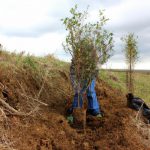
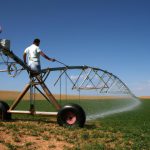

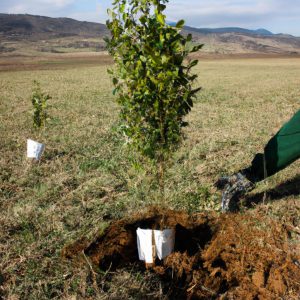
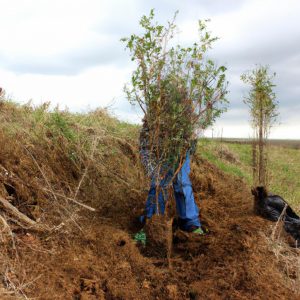
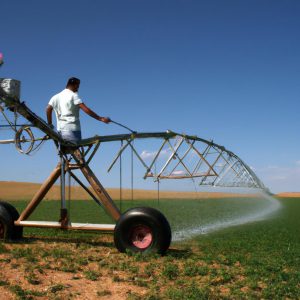
More Stories
Center Pivot Irrigation: Enhancing Agriculture and Forestry Through Efficient Irrigation Systems
Drip Irrigation for Agriculture and Forestry: Efficient Irrigation Systems
Subsurface Irrigation in Agriculture and Forestry: Efficient Irrigation Systems